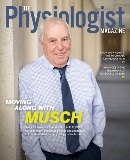Tapping Social Media to Gain Visibility in Science
By Mindy Engevik, PhD

According to a 2014 Nature survey, approximately 50% of scientists regularly use Twitter to discover peers, identify relevant papers, post content, share links to authored content, comment on research and engage in scientific and ethical discussions.
Tweets are associated with increased citation rates, which gives scientists a strong argument for using Twitter. Three other recent studies have confirmed that publications promoted on the platform have higher citation rates, with one study finding up to 75% more citations. Twitter mentions are also positively correlated with rapid article download. One of these studies found that tweets can predict highly cited articles within the first three days of publication.
After reading these studies, I decided to be more intentional about tweeting my manuscripts. My papers are starting to accumulate citations, and I think Twitter may have contributed. It’s afforded me a better ability to engage in a community that focuses on my particular niche.
I study the interaction of microbes and mucus, which is frequently discussed on the hashtag #MucusMatters. By joining the conversation on social media, I have connected with many researchers with a similar focus on the gut and other organs such as the lung or pharynx. I was also recently invited to speak at a conference where all the researchers were on Twitter! And one of my tweets led to a graduate student selecting my article to present at their local journal club. This provided increased visibility of my work and allowed me to interact with a graduate student that I might not have met through traditional methods.
Importantly, societies such as APS and research journals—including most of the journals in the APS portfolio—are also on Twitter and are seeking opportunities to engage with their members and authors and amplify their work.
Tweets are associated with increased citation rates, which gives scientists a strong argument for using Twitter.
As great as Twitter has been professionally, it’s been a lot of fun, too. My two sisters, who are also APS members and gastrointestinal researchers, worked with me to create the hashtag #SisterLab and #EngevikEmpire. Using these hashtags, we have curated scientific content and been tagged in related posts. Through the hashtag #WomenInSTEM, I have connected with several prominent female researchers, and it has been incredibly valuable to see their perspective and get their advice.
Based on my positive experience, I believe that investigators—particularly those in early-career positions—should participate in social media platforms such as Twitter. Getting started, finding researchers in your space and figuring out what you’ll tweet about takes some thought and planning in the beginning. But it won’t take long to get the hang of it once your account is established. Pro tip: I tend to tweet and post content during incubations, examine my feed during breaks and schedule posts in the evening.
I have found the scientific community on Twitter to be diverse, welcoming and engaging, and I have personally benefited from the articles, content and people I have encountered. I highly encourage all early-career investigators to join this dynamic online community.
Mindy Engevik, PhD, is an assistant professor at the Medical College of South Carolina. She is chair of the APS Trainee Advisory Committee.
This article was originally published in the January 2022 issue of The Physiologist Magazine.
The Physiologist Magazine
Read the Latest Issue
Don’t miss out on the latest topics in science and research.
View the Issue Archive
Catch up on all the issues of The Physiologist Magazine.
Contact Us
For questions, comments or to share your story ideas, email us or call 301.634.7314.


